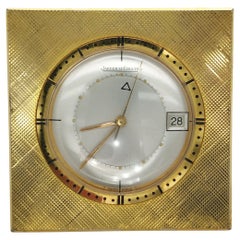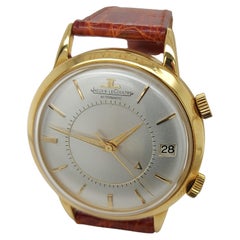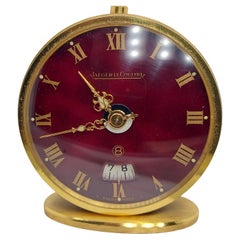Le Coultre Alarm Pocket Watch
20th Century Artisan Pocket Watches
Recent Sales
21st Century and Contemporary Swiss Artisan Pocket Watches
18k Gold, Yellow Gold
20th Century Swiss Artisan Pocket Watches
Gold Plate
21st Century and Contemporary Artisan Pocket Watches
18k Gold, Yellow Gold
People Also Browsed
Vintage 1920s Swiss Pocket Watches
18k Gold
Early 20th Century Swiss Art Deco Desk Accessories
Sterling Silver
Mid-20th Century Pocket Watches
Yellow Gold
Antique 19th Century Swiss Pocket Watches
Gold, 18k Gold, Rose Gold
Vintage 1910s Swiss Pocket Watches
14k Gold, Rose Gold
20th Century Swiss Pocket Watches
Vintage 1950s French Boxes and Cases
Diamond, 18k Gold, Yellow Gold
Antique 19th Century Swiss Artisan Pocket Watches
Gold, 18k Gold
20th Century Swiss Pocket Watches
Stainless Steel
20th Century Russian Edwardian Enamel Frames and Objects
Diamond, Rose Gold, Yellow Gold
Vintage 1920s French Art Deco Desk Accessories
Jade, Gold, 18k Gold, Yellow Gold, Enamel
Antique Late 19th Century Swiss Pocket Watches
Rose Gold
Antique 19th Century Swiss Pocket Watches
18k Gold, Rose Gold
Late 20th Century Swiss Pocket Watches
18k Gold, White Gold
Antique Early 1900s Swiss Pocket Watches
18k Gold, Yellow Gold
20th Century Swiss Pocket Watches
18k Gold, Rose Gold
Jaeger-LeCoultre for sale on 1stDibs
The exquisite art of watchmaking is on display in the distinctive designs of Jaeger-LeCoultre. The Swiss manufacturer is celebrated for its striking Art Deco–era antique clocks, while its range of sumptuous luxury watches spans the gamut of modern design, each one a time capsule of its period.
Jaeger-LeCoultre was established in 1833 by watchmaker Antoine LeCoultre in the Vallée de Joux of the Swiss mountains. LeCoultre was also an inventor who, in 1844, created the millionomètre. As the first instrument to measure thousandths of a millimeter with total accuracy, it refined the meticulous watchmaking process. By 1866, LeCoultre's son, Elie LeCoultre, took over the business. He revolutionized watchmaking by bringing all 180 skills involved in the trade into one workshop: LeCoultre & Cie Manufacture.
By 1903, the company had passed to Antoine LeCoultre's grandson, Jacques-David LeCoultre. He created a signature line of ultra-thin watches in partnership with Edmond Jaeger, a French watchmaker who specialized in flat watch cases. In 1907, Louis Cartier signed a contract with Jaeger so that Cartier would have movements for its popular timepieces produced exclusively at LeCoultre in Switzerland. This era saw the debut of Cartier’s Santos as well as its Tank watch.
Watchmakers at Jaeger-LeCoultre began to experiment with the Art Deco style that had encompassed the 1920s and the 1930s. At the time, there were many influences that led to the creation of Art Deco jewelry, while the cases of Art Deco clocks featured architectural details and saw an integration of materials such as brass, glass and marble. Iconic Jaeger-LeCoultre designs from this era include the 1928 Atmos clock and the Reverso watch. Stylish and practical, the coveted Reverso watch features a case that you can flip to protect the watch face.
During the 1950s and '60s, Jaeger-LeCoultre watchmakers continued the manufacturer’s tradition of prioritizing practical reliability. In 1958, the company introduced the robust and durable Geophysic watch collection. The Memovox Polaris, an alarm-equipped dive watch one could wear underwater, followed in 1968.
The best-known timepiece in the company's modern collection is the Master Control watch, unveiled in 1992. It symbolizes a return to the thin style and performance-first ethic of classic Jaeger-LeCoultre. In 2018, the watchmaker also launched the Polaris collection. Inspired by the original Memovox, the series features a sporty, elegant and contemporary look.
Find vintage Jaeger-LeCoultre wristwatches and pocket watches on 1stDibs.
Finding the Right Pocket-watches for You
Can you pull off a vintage pocket watch? Of course you can. With a suit and a waistcoat, a pocket watch can be a refreshing alternative to a wristwatch.
The earliest pocket watches were luxury items, and, owing to cost, they weren’t commonplace until the 19th century. Artfully crafted pocket watches were a symbol of wealth, and manufacturers such as Vacheron Constantin and Patek Philippe became known for theirs. (Today, they’re among the most sought after by collectors and enthusiasts.)
At the onset, pocket watches resembled small round table clocks, and pulling your small round table clock — perhaps of the silver variety — out of your breast pocket in front of someone else demonstrated unequivocally that you cared about punctuality. For collectors, pocket watches are big, and that means a larger canvas provided for functions without crowding the dial. For example, the Marius Lecoultre pocket watch — made circa 1890 — does everything but uncork your wine.
In the late 1800s, the open-face pocket watch became a staple on the American railroad. It was a requirement for railway workers to wear a pocket watch, as the timepieces were responsible for keeping conductors on schedule. This was a boon to the watchmaking industry, with companies like Hamilton, the Elgin National Watch Company and the Waltham Watch Company producing high-grade and workingman’s watches.
By the 1930s, wristwatches comprised the bulk of watch manufacturing in America, superseding the pocket watch. Suddenly, if you wanted to know the time, you merely glanced at your wrist. But given their vintage charm and our general appetite for good design, pocket watches are a piece of statement-making jewelry and today can prove complementary to your formal attire in a manner that is stylish and unconventional.
Let time take its course — browse a vast selection of antique and vintage pocket watches available on 1stDibs designed by legendary brands such as IWC, Cartier and more.


